Warsaw Travel Guide
As the capital of Poland, Warsaw was one of the most beautiful and sophisticated cities in central Europe until it was almost destroyed during the Nazi occupation of World War II. The end of the war saw most of the city reduced to ruins, and large swathes of the population killed or interred in concentration camps. Following this, the buildings in the heart of the old city were meticulously restored during its major rejuvenation project.
Warsaw is divided into two distinct halves by the Vistula River, with the Old Town, the modern city centre, and most of the tourist attractions on the western side. The eastern side of the river comprises mostly uninteresting residential suburbs and business districts.
Today, Warsaw presents a modern urban landscape of high-rise buildings, and the years of communist rule have left an uninspiring architectural legacy of drab concrete structures and uniform prefab-style housing.
Although many people give scant regard to Warsaw as an appealing tourist destination, it is still Poland's largest city and the political, economic, scientific, and cultural hub of the country. It has many museums and historical monuments, galleries, and historic attractions, a variety of restaurants and open-air cafes, and an energetic nightlife.
With green open spaces and classical music concerts, this modern, bustling city is a far cry from the severe communist-era images of post-war Warsaw, which still dominate the global imagination. Visitors to Warsaw will find a resilient and captivating city with lots to offer.
Things to do in Warsaw
Warsaw may not have the obvious aesthetic appeal of Krakow, but the city has many hidden historic gems and a meticulously rebuilt Old Town which stands as tribute to the resilience and determination of its population.
Many of Warsaw's historic sightseeing attractions are clustered in and around Old Town (Starego Miasta), with Market Square at its heart. This part of the city, famously rebuilt after the devastation of World War II, is a warren of cobblestone streets and alleys towered over by Gothic and Baroque buildings and palaces, and colourful tiered homes.
The city's best museums can be found in this area, which is best explored on foot. A great way to take in some of Warsaw's best historic sites is to tour the Royal Way, the route stretching from the Royal Castle in Old Town to the King's Palace at Wilanow, which is lined with museums, palaces, and historic buildings, including St Anne's Church.
The graveyards of the city also allow a step back in time: the Jewish Cemetery (Cmentarz Zydowski) is romantically overgrown in summer and spookily snow-covered in winter, and is a moving and picturesque site to explore; and the famous Powazki Cemetery is home to some remarkable sculptures and grave markers.
For some outdoor fun go strolling, paddling, and picnicking in the lovely Lazienki Park, the most popular of Warsaw's green lungs. There is a monument to Chopin in the park, which is frequently a venue for outdoor concerts. For those travelling to Warsaw with kids, the Copernicus Science Centre is a great rainy-day attraction.
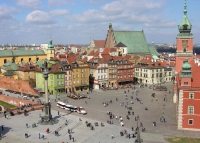
Old Town (Starego Miasta)
The Old Town is an historic focal point, rebuilt in original 17th and 18th-century style following the war. The picturesque Old Market Square (Rynek) is at the centre, surrounded by restored buildings and colourful three-storey merchant houses with Baroque and Renaissance facades, lively open-air restaurants, art stalls, and the Historical Museum of Warsaw. Buskers, painters, and musicians provide entertainment, while cobbled streets and alleyways contain beautiful Gothic churches and palaces. The impressive Royal Castle was once the home of the Polish Kings while ramparts and watchtowers dot the medieval walls surrounding the old city.
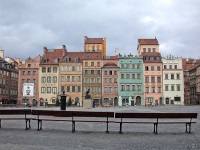
Museum of Warsaw
The Museum of Warsaw is one of the best of the city's impressive array of museums. Its three storeys are crammed with fascinating exhibitions, covering every aspect of Warsaw's history and life from the city's establishment to the present day. It occupies almost an entire side of a square in Old Town, housed in quaint historical buildings and boasting 52 rooms with permanent exhibitions, four with temporary exhibitions, a cinema, a library, and a reading room. A special feature is a documentary film showing the destruction and reconstruction of the city, with footage shot by the Nazis during their calculated and systematic annihilation of Warsaw, and footage of the careful rebuilding after the war. The film is shown in English at 10am and 12pm from Tuesday to Friday, and at 12pm and 2pm on Saturday and Sunday.
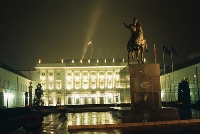
The Royal Way
Known as the Royal Way, this two-and-a-half mile (4km) route stretches from the Royal Castle in the Old Town to the stately King's Palace at Wilanów on the outskirts of the city. It bisects the central city from north to south, and is lined with galleries, museums, and historical buildings St Anne's Church. Along the way are the royal gardens of Park Lazienki with its lakes, peacocks, and charming 18th-century Lazienki Palace, which was the royal summer residence. A monument of the famous Polish composter Frederic Chopin stands in the park, with summer concerts held on the lawns. The Royal Way ends at the splendid Wilanów Palace which was modelled on Versailles, containing a museum and an art gallery called the Orangery.
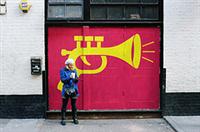
Polish Poster Gallery
The Galeria Grafiki i Plakatu (Polish Poster Gallery) is located in the old town district of Warsaw, housing the finest collection of graphic art and posters in Eastern Europe. Established in 1975, it now exhibits over 5,000 pieces of art, many displaying facets of Polish culture. Visitors will see theatre, music, and cinema posters, as well as Polish Solidarity political posters. The gallery also displays some iconic American, British, French, and German posters, and tourists may be excited to see classics like West Side Story, Moby Dick, and Dirty Dancing. Thankfully, the museum has a great selection of prints for sale.
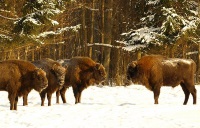
Bialowieza National Park
Bialowieza National Park is a heavily protected UNESCO World Heritage site. It guards the last remnants of the primeval forest that used to cover most of Europe at the time of the last ice age. The park is the last place on earth that tourists can see European bison, huge beasts that once roamed across the continent, living undisturbed in their natural habitats. An ecotourism destination of international repute, the nearby town of Bialowieza has launched numerous luxury spas and elite lodgings. Bialowieza National Park is a short train ride from Warsaw (two and a half hours) making it possible to visit the park on a daytrip, but it is best to spend at least one night in the area if possible.
Getting Around
Buses and trams ply the streets from 5am to 11pm each day and are the cheapest way to get around. Tickets are valid for all modes of public transport and must be bought in advance. The metro trains run frequently between the southern suburbs and the city centre and are the fastest way of getting around Warsaw.
Metered taxis can be hailed on the streets or ordered by telephone from a number of different companies; it is best to agree on a price before getting in. Taxis ordered by phone are usually a lot cheaper. Hiring a car is unnecessary except for excursions out of the city. The historic Old Town is best explored on foot and a lovely way to get around the city is provided by the rental bike system.
Warsaw Climate and Weather
Warsaw has a humid continental climate, with cold, snowy winters and mild to hot summers. On average, summer (June to August) temperatures range between 47°F (9°C) and 73°F (22°C), while winter (December to February) temperatures range between 25°F (-4°C) and 42°F (6°C). The average temperature in Warsaw is 27°F (-3°C) in January (mid-winter), and 66°F (19°C) in July (mid-summer), although summer temperatures frequently reach 86°F (30°C).
July is the wettest month, although rain does fall sporadically throughout the year; generally rainfall is heaviest in summer, with winter receiving the least rain. Spring (March, April, May) and autumn (September, October, November) are both lovely seasons with pleasant, mild temperatures and plenty of sun, although autumn can be misty.
Warsaw has a long tourist season and the city is lovely to visit any time between April and October. The peak tourist season is summer, especially July and August; however, the city can become unpleasantly crowded. Those who don't mind the cold and snow will find that Warsaw is a great winter destination.
Poland travel info
Electricity
Electrical current is 230 volts, 50Hz. The standard two-pin European style plugs are used.
Language
The national language is Polish; however, English is widely understood in tourist areas.
Money
The official currency is the Polish zloty (PLN), divided into 100 groszy. Poland still uses cash more frequently than visitors might expect, while ATMs (bankomats) and credit card facilities are available in major towns and cities. Money can be exchanged in the cities and larger towns at banks, hotels or bureaux de change called kantors, which offer the best rates. Banks are open Monday to Friday from 10am to 6pm, and some are open on Saturday until 1pm.
Tipping
Tipping is expected in restaurants in Poland and 15 percent is the standard for good service. In restaurants, when your bill is collected, saying 'thank you' signals to the waiter/waitress that they can keep the change. Tipping is not the norm in hotels across Poland, but taxis, tours and spas generally expect no less than 10 percent tip for good service.
Health
There are few health risks associated with travel to Poland. After Brexit, the Global Health Insurance Card (GHIC) replaced the European Health Insurance Card (EHIC) for UK citizens. The GHIC allows UK citizens access to state healthcare during visits to the EU. The GHIC is not valid in Norway, Iceland, Liechtenstein or Switzerland, nor is it an alternative to travel insurance. Medical facilities and standards of healthcare are good, but not many nurses or doctors speak English. If travellers take prescription medication along, they should be sure to bring a signed and dated letter from a doctor detailing what it is and why it is needed.
Safety
Having said that, visits to Poland are usually trouble free, and the precautions travellers should take are merely the safety measures advised for cities all over the world.
Local customs
Family is incredibly important in Polish society, with many citizens relying heavily on their close-knit inner circles which also may include close friends. Parties can be formal, so don't be surprised if you're introduced by your host and try to use the prefix 'Pan' for males and 'Pani' for females when addressing others. It serves as the Polish equivalent for 'Mr' and 'Ms'.
Doing business
Poland has an interesting mix of the old and the new, and this is apparent in the business world too. Women can expect a kiss on the hand rather than a handshake from the older generation and one can expect to be warmly offered drinks during meetings; it is impolite to refuse. Although the Polish are hospitable and friendly, business is still conducted formally. Punctuality is important, dress should be formal and conservative (a suit and tie are the norm) and business cards are exchanged. Use titles and last names unless otherwise indicated. English is widely spoken, though attempting some basic Polish phrases will be appreciated. Business hours in Poland are traditionally 8am to 4pm Monday to Friday, and lunch breaks are not a given as they are often unpaid.
Duty free
Travellers to Poland over 17 years, arriving from non-EU countries, do not have to pay duty on 250 cigarettes or 50 cigars or 250g tobacco; 1 litre wine and 1 litre spirits; cosmetics and medicines for personal use; gifts up to the value of €430. Travellers to Poland arriving from within the EU do not have to pay duty on 800 cigarettes or 200 cigars or 1kg smoking tobacco; 10 litres spirits, 90 litres wine and 110 litres beer. Prohibited items include birds and poultry arriving from countries infected with avian influenza. The export of all articles of artistic, historic or cultural value are subject to special regulations.
Communications
The international access code for Poland is +48 and wifi is available in towns and cities.
Passport & Visa
A passport valid for at least three months after period of intended stay is needed for those who require a visa. Generally, visa exempt nationals must have a passport valid for period of intended stay (other than EEA nationals). The borderless region known as the Schengen area includes the following countries: Austria, Belgium, Czech Republic, Denmark, Estonia, Finland, France, Germany, Greece, Hungary, Iceland, Italy, Latvia, Liechtenstein, Lithuania, Luxembourg, Malta, The Netherlands, Norway, Poland, Portugal, Slovakia, Slovenia, Spain, Sweden and Switzerland. All these countries issue a standard Schengen visa that has a multiple entry option that allows the holder to travel freely within the borders of all.
Entry requirements
US nationals do not require a visa for stays of up to 90 days within a 180-day period. Passports must be valid for three months beyond period of intended stay.
UK nationals do not require a visa for stays of up to 90 days within a 180-day period. Passports must be valid for three months beyond period of intended stay.
Canadian nationals do not require a visa for stays of up to 90 days within a 180-day period. Passports must be valid for three months beyond period of intended stay.
Australians require a passport valid for at least three months beyond period of intended stay. No visa is required for stays of up to 90 days within a 180-day period.
South African passport holders require a visa for travel to Poland. Passports must be valid for at least three months beyond period of intended stay.
Irish nationals require a passport valid on arrival, but no visa is necessary.
New Zealand nationals require a passport valid for at least three months beyond the period of intended stay. A visa is not needed for up to 90 days within a 180-day period.
Useful contacts
Polish National Tourist Office, Warsaw: +48 (0)22 536 7070 or www.pot.gov.pl.
112 (Fire Department, Ambulance and Police).Embassies / consulates in other countries
Polish Embassy, Washington DC, United States: +1 202 499 1700.
Polish Embassy, London, United Kingdom: +44 20 7291 3520.
Polish Embassy, Ottawa, Canada: +1 613 789 0468.
Polish Embassy, Sydney, Australia: +61 2 6272 1000.
Polish Embassy, Pretoria, South Africa: +27 12 430 2632.
Polish Embassy, Dublin, Ireland: +353 1 283 0855.
Polish Embassy, Wellington, New Zealand: +64 4 499 7844.
Embassies / consulates in Poland
United States Embassy, Warsaw: +48 22 504 2000.
British Embassy, Warsaw: +48 22 311 0000.
Canadian Embassy, Warsaw: +48 22 584 3100.
Australian Embassy, Warsaw: +48 22 521 3444.
South African Embassy, Warsaw: +48 22 622 1031.
Irish Embassy, Warsaw: +48 22 564 2200.
New Zealand Embassy, Warsaw: +48 22 521 0500.



